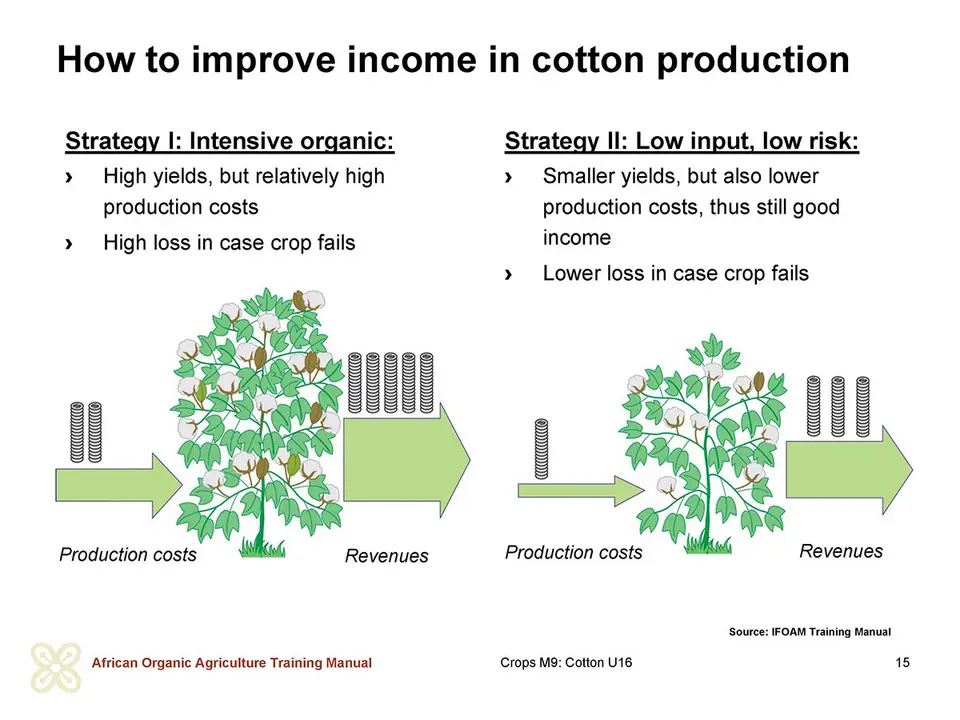Improving returns from cotton production
Cotton under organic production is always included in a diversification strategy and monoculture production is never considered. To get a better income, farmers can attempt to increase crop yields to reduce costs of production (inputs and labour) and to achieve a better price for their produce. Intensive organic farming aims to achieve high yields through optimum nutrient supply and crop care. Especially in marginal conditions and where sufficient family labour is available, it can be equally efficient to focus on reducing costs of production (low input strategy). This can be achieved by avoiding commercial organic manures and pest control materials, using only on-farm means instead. The low input strategy can also help to reduce risk in areas of frequent crop loss due to drought, hailstorms or other calamities, as farmers need to invest less money into the crop.
Cotton is grown in rotation with a number of food crops, which also need to be managed organically and can be sold for more income. Organic cotton farmers can get additional benefit (and reduce their dependency on cotton prices), when they can find a market with a better price also for the rotation crops. In Tanzania, mung beans are successfully promoted as a rotation crop.
With a diversified crop production strategy, the organic cotton growers thus contribute to better food security in the region. Therefore, organic cotton projects should also cover the rotation crops as a way of diversifying and increasing incomes to the cotton farmers.
Close collaboration between the farmers, spinners and other partners, allows establishing an environmentally and socially sound supply-chain. Ideally, the value added in processing is realised locally. The outcome of a good business relationship between the organized cotton farmers and the lint producer and exporter, whether it is private like in Tanzania or private-public like in West Africa, has better chances to steadily improve competitiveness of the cotton value chain and at the same time to respond to needs of society and the environment.
Cotton itself is also a classic dual-purpose crop (lint, oil) with many uses. A harvest yielding 1,000 kg of seed cotton per hectare provides 320 to 420 kg of fibre (raw cotton), 200 to 250 kg of seed cakes or flour, 100 to 150 kg of oil, 200 kg of shells, 20 kg of retained seeds and 40 kg of dirt.

 tap and then scroll down to the Add to Home Screen command.
tap and then scroll down to the Add to Home Screen command.